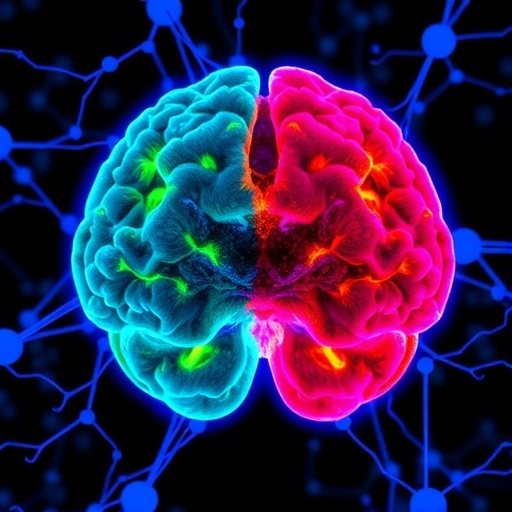
New research from the Sylvester Comprehensive Cancer Center at the University of Miami presents a groundbreaking approach to treating glioblastoma, one of the most challenging forms of cancer predominantly affecting the brain. Despite decades of advancements in immunotherapy, glioblastoma has remained largely resistant, and outcomes for patients have seen little improvement over the years. This recent study reveals a novel strategy that could change the landscape of treatment for this aggressive cancer by leveraging the body’s immune response.
Glioblastoma is characterized by its highly immunosuppressive microenvironment, which poses a unique challenge to therapeutic interventions. The traditional methods of treatment, including surgical resection, radiation, and chemotherapy, have proven inadequate. The study, led by Dr. Ashish H. Shah, indicates that suppressing a protein known as ZNF638 can trigger an antiviral immune response within the tumor. This discovery not only offers a potential new treatment avenue but also suggests the possibility of using ZNF638 as a biomarker for personalizing immunotherapy for glioblastoma patients.
In the field of oncology, immune checkpoint inhibitors (ICIs) have revolutionized the treatment of various cancers by allowing the immune system to better recognize and attack tumor cells. However, the application of these therapies in brain cancers, especially glioblastoma, has been limited due to the immune-suppressive environment of the brain tumors. According to Dr. Shah, conventional immunotherapy approaches have failed to yield significant improvements for glioblastoma patients, necessitating the exploration of alternative strategies, such as viral mimicry.
The concept of viral mimicry hinges on the idea of confusing the immune system into responding as if it were encountering a viral infection. By manipulating ancient viral fragments embedded within the human genome, researchers aim to activate an immune response robust enough to combat tumor cells. This technique has been previously utilized successfully in treating other cancer types; however, its translation to glioblastoma successfully marks a significant advancement in the fight against this formidable foe.
One of the critical breakthroughs of the study involved the protein ZNF638, which regulates the silencing of retroviral sequences within the genome. By suppressing ZNF638, the researchers uncovered the potential to “unsilence” these viral elements, thereby eliciting an antiviral immune response that enhances the efficacy of immune checkpoint therapies. Through comprehensive analyses of genetic data from glioblastoma patients, the research team established a direct correlation between lower ZNF638 expression levels and improved responses to ICIs, suggesting that this biomarker could pave the way for personalized treatment protocols.
In their investigations, the researchers applied advanced techniques, including cell-based experimental models and single-cell RNA sequencing, to assess how ZNF638 suppression would affect immune cell infiltration within tumors. Their findings indicated that glioblastoma tumors with reduced ZNF638 levels experienced greater infiltration of T-cells – crucial players in the immune response – alongside reduced tumor growth. These insights substantiate the potential of targeting ZNF638 as a dual-functional approach: not only enhancing the effectiveness of existing therapies but also identifying patients more likely to respond favorably to these novel treatments.
The translational implications of targeting ZNF638 do not stop here. The study’s authors envision a future where a drug designed to penetrate brain tissue and effectively inhibit ZNF638 could be developed. The anticipation is that such a therapeutic approach would generate a significant paradigm shift in the application of immunotherapy for glioblastoma, particularly in creating treatment plans tailored to individual patient needs.
Moreover, the promising preliminary results affirm the feasibility of employing ZNF638 as a clinical biomarker to predict ICI responsiveness. As glioblastoma remains one of the most lethal malignancies, any advancement that improves prognoses and treatment responses is monumental. Utilizing ZNF638 in clinical settings could transform the current one-size-fits-all approach that has characterized glioblastoma treatment into a more refined and effective model, leading to enhanced patient outcomes.
As researchers continue their work, the scientific community remains optimistic. The future of glioblastoma treatment may not just lie in targeting the tumor directly. Instead, it may hinge on harnessing and enhancing the body’s existing immune responses to recognize and eliminate these challenging cancers. Dr. Shah’s study certainly sets a precedent for future research directed at developing innovative methodologies and strategies for combating not only glioblastoma but potentially various forms of cancer that exploit similar mechanisms of immune evasion.
In conclusion, the research from the Sylvester Comprehensive Cancer Center shines a light on new possibilities within glioblastoma treatment strategies, emphasizing the significance of understanding cancer biology and the immune system’s role in this intricate battle. As we await further developments and clinical applications of these findings, the hope is that advancements will soon translate into tangible benefits for glioblastoma patients facing this formidable adversary.
Subject of Research: Glioblastoma Treatment with Viral Mimicry
Article Title: “Activating Antiviral Immune Responses Potentiates Immune Checkpoint Inhibition in Glioblastoma Models”
News Publication Date: March 17, 2025
Web References: Sylvester Comprehensive Cancer Center
References: DOI: 10.1172/JCI183745
Image Credits: Photo by Sylvester Cancer
Keywords: Glioblastoma, Viral Mimicry, Immune Checkpoint Inhibitors, ZNF638, Personalized Treatment, Antiviral Immune Response, Cancer Biology.
Tags: antiviral immune response in tumorschallenges in glioblastoma therapyDr. Ashish H. Shah findingsglioblastoma treatment advancementsimmune checkpoint inhibitors in oncologyimmunosuppressive microenvironment in glioblastomaimmunotherapy for brain cancernovel cancer treatment approachespersonalized immunotherapy strategiesSylvester Comprehensive Cancer Center researchtargeting key proteins in cancer therapyZNF638 protein suppression





